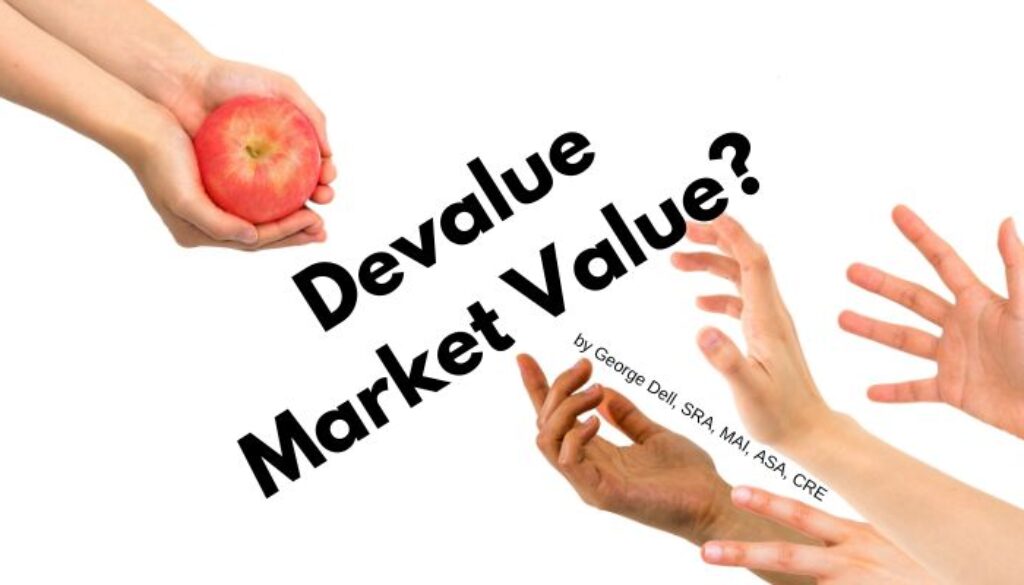Everyone knows value. Of course! It’s easy!
Value is what I can sell something for. Well, sorta.
No, wait – value is what I am willing to pay for something.
Editor’s Note: This is Part 2 of Market Value or Other Value.
I have an apple. You want one. I threaten to take a bite out of my apple. You are hungry. You think about knocking the apple out of my hand, then grab it and run. But the apple might roll away, or get dirty. So you say: “I will give you this pretty green rectangle paper.” It has a picture of a president, and other fine things. It also has value.
I respond: “I like that president.” “I will give you my apple for your president!”
Ah, now I remember demanded supply. They told me that is where the two lines cross each other in the middle. It is a point. That’s the point. A point value. Right at the crossing dot. Easy.
One line is the bunch of buyers willing to buy. At higher prices, less will buy. The other line is that bunch of owners – and the prices at which they are willing to sell. Just gimme more money, I give you more stuff. Easy.
But then some econom-mystics said this was a theory. And they said the dot was not only the price, but they said that price is the value! A guy called Adam Smith said this value point was the result of a mystical “invisible hand.” Apples bought and sold only at this exact invisible-hand point value.
But there were rules. Adam’s apple rules had to comply with “market” conditions and assumptions. He was a perfectionist. The rules are simple. The market has to have:
- Many buyers and many sellers.
- Easy market entry and exit.
- Homogeneity
- Perfect knowledge.
- No price control.
Oops! Wow! A lot of conditions. But is there such a thing as a “market” value for houses? Let’s take a quick look at these conditions. In real estate markets we find –
- Few buyers looking for few homes.
- Constrained new product.
- Each house is different.
- Imperfect knowledge.
- Some regulation.
So now we know. A Real Estate market, to work well, and in order to calculate to an exact (or “most probable” value) the market would have to have all these conditions.
Oops — It complies with none of them! Is there a point?
At best, we can identify a most likely range – a “transaction zone” as identified by Richard Ratcliffe. Valuation is ruled by what economists call game theory [Von Neuman]. It accommodates few buyers/sellers, existing product, heterogeneity, amateur knowledge, and government and organizational and lender regulation and influence on the “market.”
What is value? Everyone knows. Trust me!

March 22, 2023 @ 4:09 am
Very nice,
Thank you
March 22, 2023 @ 6:59 am
That’s a question that we’ve been wrestling with for decades. The problem is that most of our clients and too many appraisers do not understand the term as currently defined.